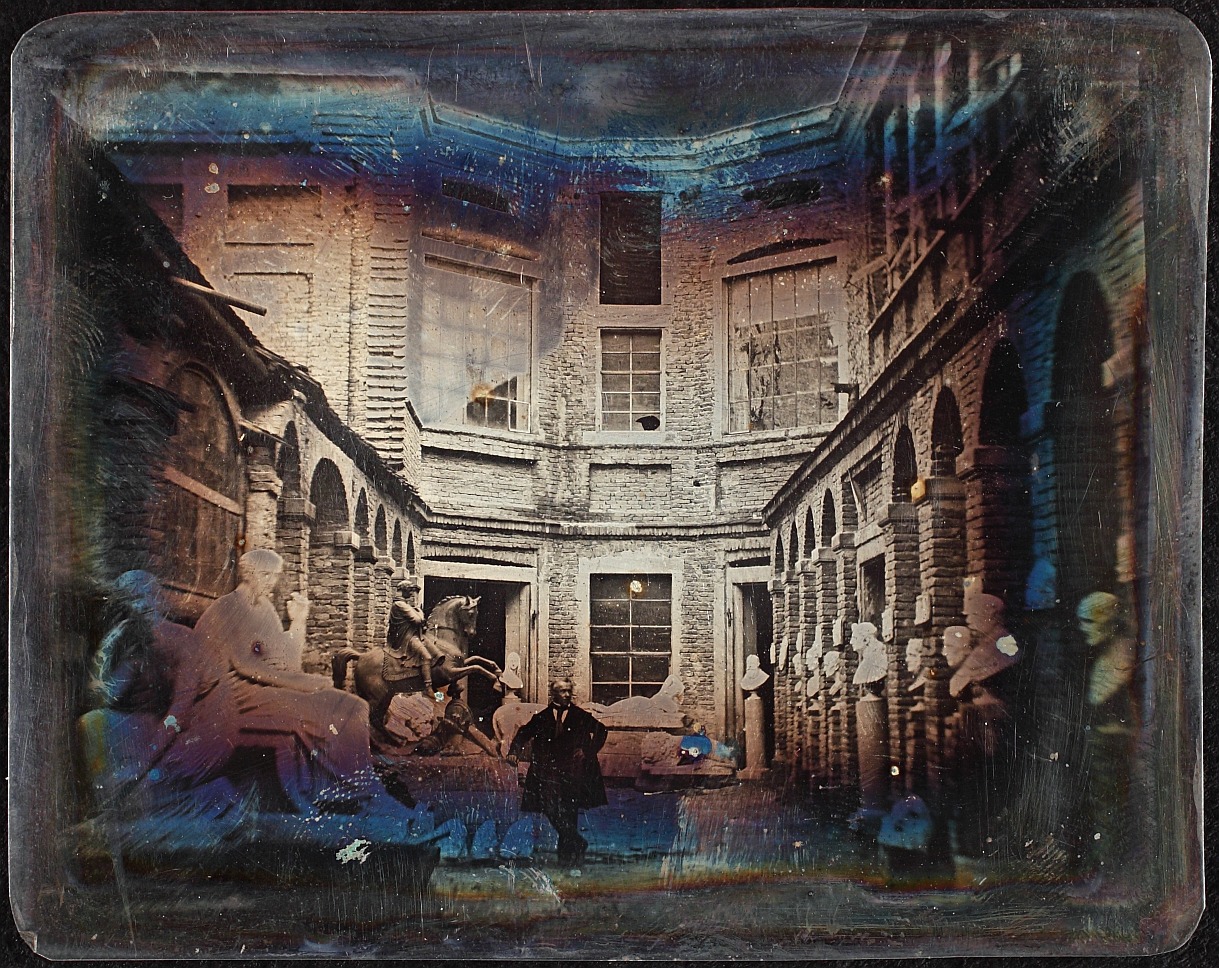Adolf Gola1846, 28 August
István Ferenczy among his statues, Országház Street 14., Buda
Daguerreotype
The Central European Research Institute for Art History (KEMKI)(Curatorial description by Eszter Békefi, accessed: 20 November 2025)
Daguerreotype Series on Istvány Ferenczy's Works for the Matthias Rex Monument
The series of daguerreotypes of the works of the sculptor István Ferenczy, made by Adolf Gola and preserved in the collection of the SZM - KEMKI ADK, recorded the effort attempt to erect the firsta Hungarian public monument for a Central-European national leader. The images therefore document an important phase in the formation of Hungarian national identity in the nineteenth century Reform era.
In addition to its cultural-historical significance, the series is also of significant technical-historical interest because very few verifiable Hungarian daguerreotypes have survived. This series is particularly special because it is the earliest surviving example of documentary photography in Hungary. The daguerreotypes in this series document art objects and the exact date and location of the daguerreotypes of the series are also known, as well as the sponsor and the creator. Their value is also enhanced by the fact that the pictures were taken outdoors in the yard of the artist's house in Buda, and one of them shows a full portrait of the sculptor.
István Ferenczy (1792–1856) was the most important Hungarian sculptor in the first half of the nineteenth century. In 1840, he was commissioned to design a monument of King Matthias. He made several plans and studies for this work, which had many supporters, but ultimately—and primarily for financial reasons—the monument failed to materialize. After the battles of the domestic intellectual life, the plans were finally abandoned, and the artist went bankrupt. In 1846, he was forced to sell his studio in the Buda Castle district and he destroyed the plaster casts kept there. Ferenczy retreated to his hometown of Rimaszombat (today, Rimavska Sobota in Slovakia) where he lived the remainder of his days in relative obscurity.
In 1846, Countess Blanka Teleki, Ferenczy’s talented and wealthy student, approached a photographer to capture the plaster studies that were subsequently destroyed. We know about the circumstances of the preparation of the daguerreotype series from István Ferenczy's letter to his brother, József Ferenczy on December 24, 1846 (SZM – KEMKI ADK, Inv. Nr.: 653/1920).
As we learn from the letter, the large-scale model of the monument was completed for the daguerreotype series. The equestrian statue of Matthias on the complicated pedestal was a new sculpture, and during the making of it Ferenczy had reflected on previous criticisms. One shot was also taken of the previous, larger version. The bust of Matthias I and the Allegory of Time would have been placed in the "sanctuary" of the monument, just like the reliefs paying homage to the two great predecessors (Reconciliation of Matthias I and Mihály Szilágyi; at the grave of Matthias’ father, János Hunyadi). Frieze-like reliefs on the sides of the pedestal were recorded in three separate shots (Apotheosis of King Matthias; Matthias as Defender of the Laws; Matthias and Beatrix among Scientists and Artists). The allegories next to the entrance (Science and Power) were already cast in bronze at that time, and the daguerreotypes depicting them were also made.
LL/131378
